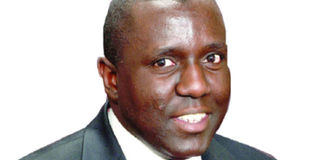Kenyan election petition brings a faint glimpse into the future

Tomorrow the Supreme Court of Kenya will deliver judgment in Raila Amollo Odinga & Kalonzo Musyoka vs Independent Electoral Boundaries Commission & two others (2017). The petition was argued and done in just three days. A ruling on Friday will allow the swearing in on September 9, 2017.
Barring a surprise, the election will be upheld not so much because the Judges are mostly pro-government, but because the petitioner’s case failed to deliver a smoking gun that would close the gap between Odinga and Kenyatta.
Most of the processes expected did happen and the loopholes were all known prior to the election; i.e. insufficient broadband coverage at 10,000 polling stations or ballot paper over issue accounting for 10% of all ballot papers.
Two years from now, the IEBC starts a new phase of its work redrawing electoral boundaries in Kenya’s 290 constituencies. Based on population, redistricting is likely to yield an even more lopsided parliament.
Most of the new seats will come from counties like Kiambu, which has nearly one million people, Nairobi which already has 32 seats in Parliament and perhaps the heart of the former Eastern Province Ukambani.
The same areas are rapidly urbanising and will steal even more people from the bigger Kenya. Smaller counties like Turkana have just five Members of Parliament. Parliament in 2022 will have these large single language blocks which will present a challenge for nation building in Kenya.
In England, the sentiments about the English question largely contributed to a majority of English voters voting to leave the European Union. There are also further more regional questions like that of London, which controls 10 per cent of the English economy and has 47 Members of the House of Commons.
In these circumstances, the centre will become even more important as Kenya will evolve into three or four mini-states all very prosperous and well on the way into middle income and the marginal periphery, which will still look like a typical African country.
Expect Kenya to pay less attention to institutions like the EAC, especially if leadership doesn’t evolve or change in the neighboring states. In terms of trade, this isn’t good news because the friction between Kenya and Tanzania has already disrupted into something just short of a trade war. Uganda mostly exports cheap food and grain and even here the Kenyans come and pick it up but at the high end, Kenya dominates.
Political union in the EAC will also become more talked about and likely to remain in the drawers.
Tanzania keeps on looking over its shoulders at its smaller more feeble neighbours with apprehension.
Ties with Kenya must improve before the rest of the EAC can chime in.
Inside the courtroom minus a few scuffs here and there, the lawyers were arguing what for most of them will be the last likely presidential election petition. They represent the two shades of the Kenyan establishment - those who fought for multipartism 30 years ago - and those who did not exactly leave the high table.
Old man Raila Odinga did not say much a sign that he is starting to mellow, this was a better way to end than in the streets with machetes and bon-fires.
My Luo friends tell me that they have to swallow their pride and think for once of becoming political brides.
Kenya is moving so fast, it is very risky to remain behind. It is still a remote, but real possibility that Senator Gideon Moi may end up as Jubilee-Kanu’s flag bearer in 2022, something not very fundamentally different from the equilibrium that Daniel arap Moi, the doctor of politics in Kenya set in place in 2002 as he prepared to leave power.
Mr Ssemogerere is an Attorney-at-Law and
an Advocate. [email protected]




